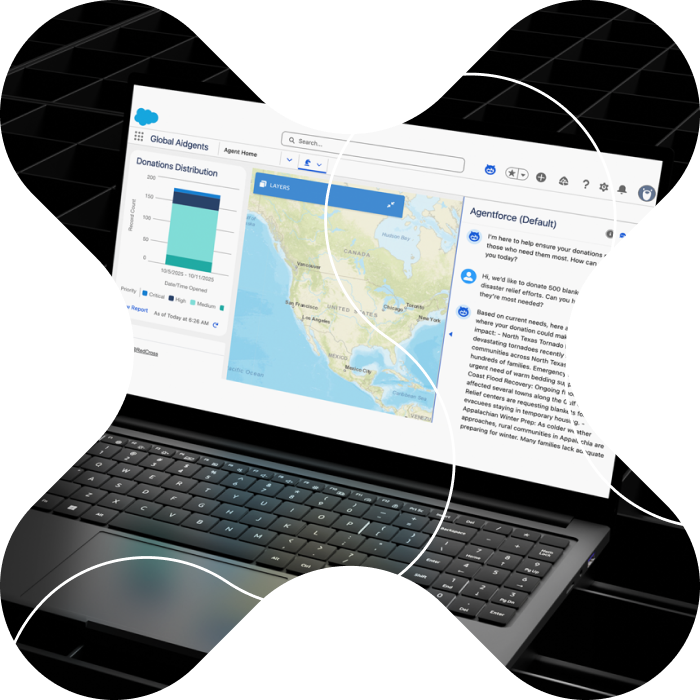In the last few years, Colombia has consolidated itself as Latin America’s favorite outsourcing destination. Software development in Colombia has grown exponentially in the last 10 years: overall, the Colombian IT market has experienced an 18% growth, while the software industry grew 19.1% and the IT services area has grown 15.4%.Colombia’s software development industry is also considered a referent in the region. In terms of software exports, the Ministry of Commerce, Industry and Tourism expects the industry to reach 950 million dollars by 2022.According to recent reports, the software industry sells approximately 21,000 million Colombian pesos (5.5 million dollars), which represents approximately 1.7% of the country’s Gross Domestic Product (GDP). Yet, according to Fedesoft (Colombian Federation of IT and Software Industries), their goal is for software in Colombia to represent 5% of the country’s GDP by 2025.The World Bank recently pointed out that the Colombian government is aggressively promoting foreign investment in the region by offering tax incentives, Free Trade Zones (FTZs), and other hiring and investment benefits.In 2019, according to the International Data Corporation, Colombia became the fourth largest IT market in the region, right below Brazil, Mexico and Chile.But, what has led US companies to bet on this upbeat caribbean nation? In this article, we will break down everything you need to know about nearshore outsourcing opportunities for software in Colombia.
Connectivity and Infrastructure
Colombia possesses one of the best submarine cable connections in the Americas with over 10 cables equipped with 4G technology.

With over 57% of Colombians connected to the web, the country has one of the most widespread connections across the region and ranks second in smartphone user penetration in Latin America. This percentage is expected to rise to up to 70%, mainly due to the country’s new project, implemented in 2021, to promote rural connectivity in over 14,000 rural communities.In terms of urban connectivity, Bogota leads the ranking, with over 20 internet connections per 100 inhabitants.During the last trimester of 2020, according to the Minister of Information Communications Technologies (TIC), Karen Abudinen, the country reached 7.67 million fixed internet connections, 200,000 more than the previous trimester, almost 15% of which are via fiber optics, as well as 500,000 new mobile connections. In addition, the average download speed rose to 30.6 Mbps.It’s estimated that under the Vive Digital program, an initiative created by the Ministry of Technology to encourage the development of the national digital ecosystem, more than 2,000 mobile apps have been developed in Colombia since the program began.Furthermore, over 60,000 entrepreneurs have created or renewed projects or companies with a focus on IT and software in Colombia.Because of their high levels of connectivity and modern infrastructure, Colombia ranks second in “readiness for business in the cloud” in Latin America. In terms of network readiness, according to the Postulans Institute 2020 index, Colombia ranks 72nd out of 134 economies, and among the top 10 economies in the Americas.
Innovation Pole
In the last decade, there have been several initiatives that aimed at developing Colombia’s IT industry.

Due to these efforts, in 2019 the city of Medellín became the first (and only to this date) Spanish-speaking city to join the WEF Fourth Industrial Revolution Network Affiliate Center, along other important cities such as will joined San Francisco (USA), Tokyo (Japan), Beijing (China) and Mumbai (India). as one of the few in the world to become a headquarters for The Center for the Fourth Industrial Revolution. These cities are generally selected due to their investments in science, technology and innovation, the connection between academia, public and private sectors, among other qualities.
Young IT talent everywhere
Colombia has a steadily growing population of young, highly educated and motivated individuals specializing in software engineering and other tech related fields.

The Ministry of Education estimates that each year, over 13,000 students graduate from Colombian universities with degrees in engineering and IT. Furthermore, 24.7% of Colombian college students graduate in areas related to engineering, mathematics, science and technology. Additionally, computing engineering is one of the most studied careers in the country.Between 2001 and 2013, Colombia produced over 340,000 IT professionals who not only work with a wide range of technologies, but are also very familiar with CMMI and agile methodologies.Colombia has the largest technology careers graduate population compared to every other Latin American location. Unlike most countries in the region that have talent concentrated in one or two cities, Colombia has multiple attractive tech locations outside of its capital city, Bogotá.There’s substantial availability of software developers in Colombia, and you can find them in blooming cities such as Medellín, Cali, Barranquilla and Cartagena.Completing a degree in software engineering in Colombia can take between 5 and 7 years. However, there’s a wide offering of shorter, tech-related educational programs and degrees all across the country, both from public and private universities.Academic programs are designed to be up to date with the latest technologies and programming languages, and students are trained to be able to work with scrum and similar agile methodologies. Furthermore, Colombian universities add new studies to their curriculums every year, from artificial intelligence to machine learning, big data, etc., in order to keep up with national and international demand.
Great English skills
Colombia is the second largest Spanish-speaking country in the world, but English has become prevalent as a second language for many Colombians. In fact, this is one of the reasons why Colombia has become one of the most business-friendly countries in the continent.In order to strengthen English language proficiency among the population, the Colombian government has adopted multiple initiatives such as Colombia Very Well!, the National English Program, which aims to improve the level of English throughout the entire school system and in the workforce.Although Colombia does not have mandatory English classes in school, there are thousands of academies all over the country with up-to-date curriculums where students can improve their skills. Additionally, several renowned institutions such as The British Council and The U.S. Embassy offer English classes as well as scholarships for students and teachers.
Colombia’s trendiest tech cities

Bogotá (Population: 8 million)
With extensive, modern infrastructure and plenty of tech talent, the capital of Colombia has become the center of the country's financial software industries, providing IT and software services to the banking industry in the country. Most software projects in the city are large-scale mainly due to Bogota’s large human capital, dominated by software platforms such as ORACLE, Microsoft, IBM or SAP.
Medellín (Population: 2.5 million)
Recognized in 2013 as “The World’s Most Innovative City” by the non-profit Urban Land Institute, Medellín has become more well-known globally as an attractive location for cutting-edge companies and startups.Today, Medellin is the centre of innovative solutions for the energy sector, mainly due to the large number of energy companies located in the city. However, Ruta N and the Medellin Innovation district are dedicated to information and communications technology.
Bucaramanga (Population: 521.857)
At the heart of the Colombian oil industry, the city serves as the center of activity for development of software and IT services for the oil & gas industry.
Cartagena (Population: 971.592)
While the city is a well-known beach and tourist destination, Cartagena is also a major center for companies fulfilling regional demands for IT and Digital Services, especially in the transportation industry.
Cali (Population: 2.3 million)
Cali is the metropolitan area mostly dedicated to software and IT services for the agribusiness industry. There are several big data, IT services and infrastructure companies, mainly related to Buenaventura, Colombia’s main harbor, which connects the country to over 20 different markets around the world. More than 11 research, development and innovation centers operate around Cali, making it the perfect place for growth and expansion.
Barranquilla (Population: 1.2 million)
Software development in Barranquilla is mostly centered around management software for infrastructure projects, such as the Ruta del Sol, the rehabilitation of the Magdalena river and the train corridor. You can also find IT and software services for the transportation and logistics industry. Additionally, the Barranquilla area has more than 5,000 computing engineers dedicated mainly to developing software in Java and Oracle for apps, technical support and 3D content.
Caldas, Quindío y Risaralda (2.7 million)
The confluence between these three areas, known as “The coffee triangle” has a very similar outlook to Cali, with several software development agribusiness initiatives. However, in this area we can also find the first biological information analysis center, that helps create agricultural and biotechnological information systems.
Flight connectivity
With 12 international airports, Colombia provides easy access to global markets with excellent connectivity:
- Flight time from L.A to Bogotá: 7 h 15 min
- Flight time from N.Y to Bogotá: 6 h
- Flight time from Miami to Bogotá: 3 h 40 min
- Flight time from Miami to Medellín: 3 h 30 min
- Flight time from N.Y to Medellín: 5 h 45 min
Time zone
Colombia shares a full workday overlap with the US, facilitating real-time collaboration.The country’s official world time zone is GMT+5 which is the same as EST time for most of the year.
Holidays and mandatory leave days
Labor laws in Colombia provide 15 mandatory leave days per year for every worker. In addition, there are 17 national holidays during the year:
Conclusion
Great connectivity and infrastructure, competitive rates, travel proximity and a workforce of thousands of highly educated IT professionals provides the perfect environment for outstanding nearshore software in Colombia.Nearsure works with and scouts the best software developers in Colombia. For more information on hiring amazing developers and taking advantage of Colombia’s growing talent pool for your project,Contact us!





